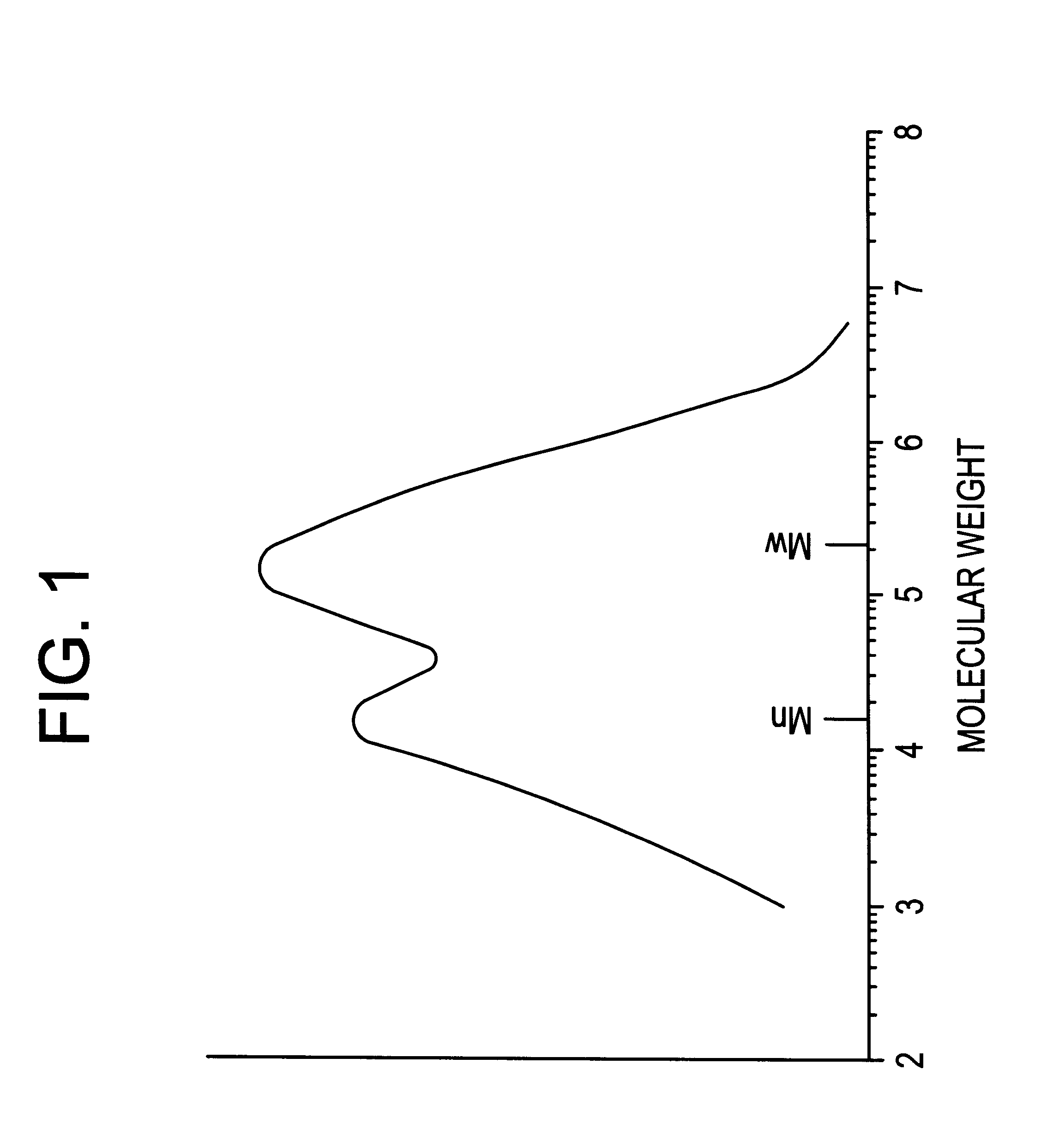Production of multimodal polythylene
a polyethylene and multi-modal technology, applied in the field of polyethylene preparation, can solve the problems of high molecular weight polyolefins that are difficult to process and can be costly to produ
- Summary
- Abstract
- Description
- Claims
- Application Information
AI Technical Summary
Problems solved by technology
Method used
Image
Examples
example 2
This Example used the metallocene ethylene bis (4,5,6,7-tetrahydro-1-indenyl) zirconium dichloride of Example 1 in two reactors in series to produce a bimodal LLDPE polyethylene resin. The catalyst comprised 4 wt % on the support.
The catalyst was employed in a copolymerisation process to produce a polyethylene copolymer. In a first reactor of two serially connected reactors, the ethylene comprised 4 wt % and the hexene comprised 3.6 wt %, each in the off gas. The polymerisation temperature was 70.degree. C. and the residence time was 70 minutes. Hydrogen was added to the reactor in an amount of 0.2 Nl / h.
This first polyethylene product was used to constitute a first LLDPE fraction of an LLDPE bimodal resin which comprised a chemical blend of two separate polyethylenes. The second polyethylene produced in the second of the serially connected reactors using the same catalyst as for the first reactor comprised an LLDPE polyethylene.
In the polymerisation process to produce the second pol...
PUM
| Property | Measurement | Unit |
|---|---|---|
| Percent by mass | aaaaa | aaaaa |
| Density | aaaaa | aaaaa |
| Density | aaaaa | aaaaa |
Abstract
Description
Claims
Application Information
 Login to View More
Login to View More - R&D
- Intellectual Property
- Life Sciences
- Materials
- Tech Scout
- Unparalleled Data Quality
- Higher Quality Content
- 60% Fewer Hallucinations
Browse by: Latest US Patents, China's latest patents, Technical Efficacy Thesaurus, Application Domain, Technology Topic, Popular Technical Reports.
© 2025 PatSnap. All rights reserved.Legal|Privacy policy|Modern Slavery Act Transparency Statement|Sitemap|About US| Contact US: help@patsnap.com



